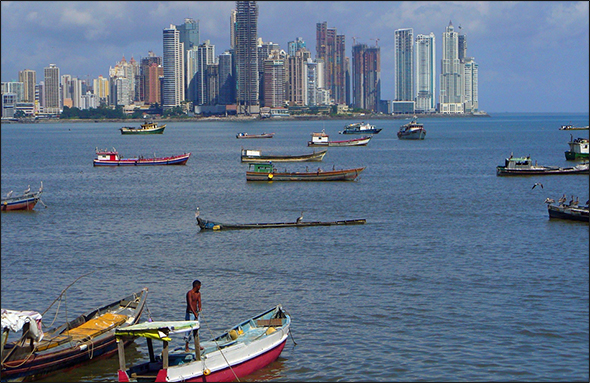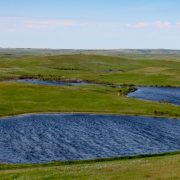Water News: What’s Ahead in 2012
News headlines are often dominated by the big, unexpected events — BP’s Deepwater Horizon oil spill in 2010, for example, or Japan’s earthquake, tsunami, and nuclear catastrophes in 2011 — but some events come with advance warning. Here is a preview of the water news to look for in 2012.

By Brett Walton
Circle of Blue
Food
The food crisis in the Horn of Africa will continue this year, according to a famine early warning system funded by the U.S. Agency for International Development (USAID). Though the famine early warning system has global forecasts, the Horn of Africa is the only emergency spot forecasted in the near term.
In response, the United Nations, which said in a statement that the situation is “expected to get worse”, has called for more than $US 2.3 billion in aid to help Somalia, Ethiopia, Kenya, and Djibouti to cope with refugee settlement and the short-term effects of the drought. At the same time, the executive director for the United Nations Children’s Fund (UNICEF) says that a million children in Africa’s Sahel region are at risk of malnutrition in 2012 because of poor harvests caused by insufficient rain.
Health
Global health leaders are hopeful that 2012 is the year that Guinea worm, a water-borne parasite, will be eradicated. Infections have fallen from 3.5 million in 1986 to 1,056 during the first 10 months of 2011. Following small pox, Guinea worm would be the second-ever human disease to be eradicated. Polio, another water-borne disease, is next in line. Advocates anticipate a polio-free world in 2013.
Energy
Thanks to the payroll tax cut compromise, U.S. President Barack Obama has 60 days to approve or deny a permit for the Keystone XL pipeline. The 2,700-kilometer (1,700-mile) oil conduit from the Canadian tar sands to refineries in Texas would have an initial capacity of 700,000 barrels per day. The president’s decision should come by the end of February.
The U.S. Environmental Protection Agency (EPA) will make several final decisions this year that could have consequences for water resources, and the agency will start the rule-making process for several new regulations. In the spring, the EPA will decide what pollution controls are necessary for the Navajo Generating Station, a coal-fired power plant that provides nearly all the electricity to move Arizona’s annual share of the Colorado River, 3.5 billion cubic meters (912 billion gallons).
The EPA will also submit a draft rule, expected to be released in January, to regulate greenhouse gas emissions from new and existing power plants.
By the end of 2012, preliminary results from the EPA’s investigation into drinking water contamination from hydraulic fracturing will be available. Already this year, Ohio has suspended operations at five deep wells used to dispose of fracking-related fluids, citing concerns of a possible link between well activity and nearly a dozen quakes in the area.
Governments could determine the fate of several large dams on major rivers this year: the Grand Inga on the Congo River in the Democratic Republic of the Congo; the Xayaburi on the Mekong River in Laos; the Mphanda Nkuwa on the Zambezi River in Mozambique; and a cascade of dams on the Nu River in China.
Barring any delays, two World Bank-funded studies on Tajikistan’s proposed Rogun Dam will be completed by the end of the year. The studies are a prerequisite for possible World Bank financing for the project. One study assesses the dam’s technical and economic merits; the other looks at potential environmental and social effects. At 336 meters (1102 feet), Rogun would be the world’s tallest dam, trumping the Nurek Dam, also in Tajikistan.
Policy
In Australia, water management officials are expected to release the final versionof the Murray-Darling Basin Plan, a controversial policy that will reduce the amount of water withdrawn from the basin’s rivers.
During the first half of the year, the U.S. EPA will hold public meetings to formulate a draft version of its new “integrated planning” policy, which will reduce the cost of complying with water quality violations. In October 2011, the agency’s acting assistant administrator for water used a three-page memo to introduce the concept.
March 31 is the target deadline for the U.S. Secretary of the Interior to decide whether or not to approve a plan for removal of four dams in the Klamath River Basin in Oregon and California. The Klamath agreements also include projects for environmental restoration, fisheries, water conservation, and tribal programs.
The Chinese government is expected to release its latest Five-Year Plan for the energy sector. The plan is expected to guide the country’s next phase of hydropower development.
Law
On January 9, the U.S. Supreme Court will hear arguments about landowner rights and government power. The case, Sackett v. Environmental Protection Agency, began when the EPA claimed an Idaho couple was building their home on a wetland — in violation of the Clean Water Act — and threatened fines of $US 32,500 per day until the couple complied. The Supreme Court will decide whether the EPA violated due process laws. If so, the agency may have to seek permission from a judge before using compliance orders, its most common enforcement tool.
The Nevada state engineer will decide by March whether to grant groundwater rights in four rural valleys to the Southern Nevada Water Authority, the wholesale provider for the Las Vegas area.
In August the International Court of Arbitration will submit its final decision on India’s Kishanganga hydroelectric project, a point of contention between India and Pakistan since construction began five years ago. In the fall of 2011, the court issued an interim decision that ordered India to halt construction of works that would permanently affect the river’s flow.
This could be the year that the International Maritime Organization’s convention on ballast water management is approved. The convention would reduce the risk of invasive aquatic species by requiring cargo ships to manage the water they use to balance their loads. For the convention to enter into force, it must be ratified by countries representing 35 percent of the world’s merchant shipping tonnage. To date, the convention is 9 percentage points below that threshold.
Meetings
The sixth edition of the water-sector’s largest gathering, the World Water Forum, will take place March 12 through 17 in Marseille, France. The fourth World Water Development Report will be released that week.
In June, sustainable development advocates will come together in Rio de Janeiro, Brazil, to mark the 20th anniversary of the Earth Summit, a landmark conference that produced agreements on climate change and biological diversity. This iteration will focus on the green economy and poverty.
Arts
Several water-themed documentaries will be released in 2012. The global water crisis is the subject of Last Call at the Oasis, while actor and director Robert Redford narrates The River Red, a film that considers a new “water ethic” for the Western United States. Hidden history is the topic of Under the City, in which filmmakers go underground to explore rivers buried by urban development in London and New York City, among others.
Photographer Edward Burtynsky, who has turned his lens on the mining and oil industries, is now working on a series about water, which will be completed in 2013.
Brett Walton is a Seattle-based reporter for Circle of Blue. Contact Brett Walton
Brett writes about agriculture, energy, infrastructure, and the politics and economics of water in the United States. He also writes the Federal Water Tap, Circle of Blue’s weekly digest of U.S. government water news. He is the winner of two Society of Environmental Journalists reporting awards, one of the top honors in American environmental journalism: first place for explanatory reporting for a series on septic system pollution in the United States(2016) and third place for beat reporting in a small market (2014). He received the Sierra Club’s Distinguished Service Award in 2018. Brett lives in Seattle, where he hikes the mountains and bakes pies. Contact Brett Walton









Leave a Reply
Want to join the discussion?Feel free to contribute!